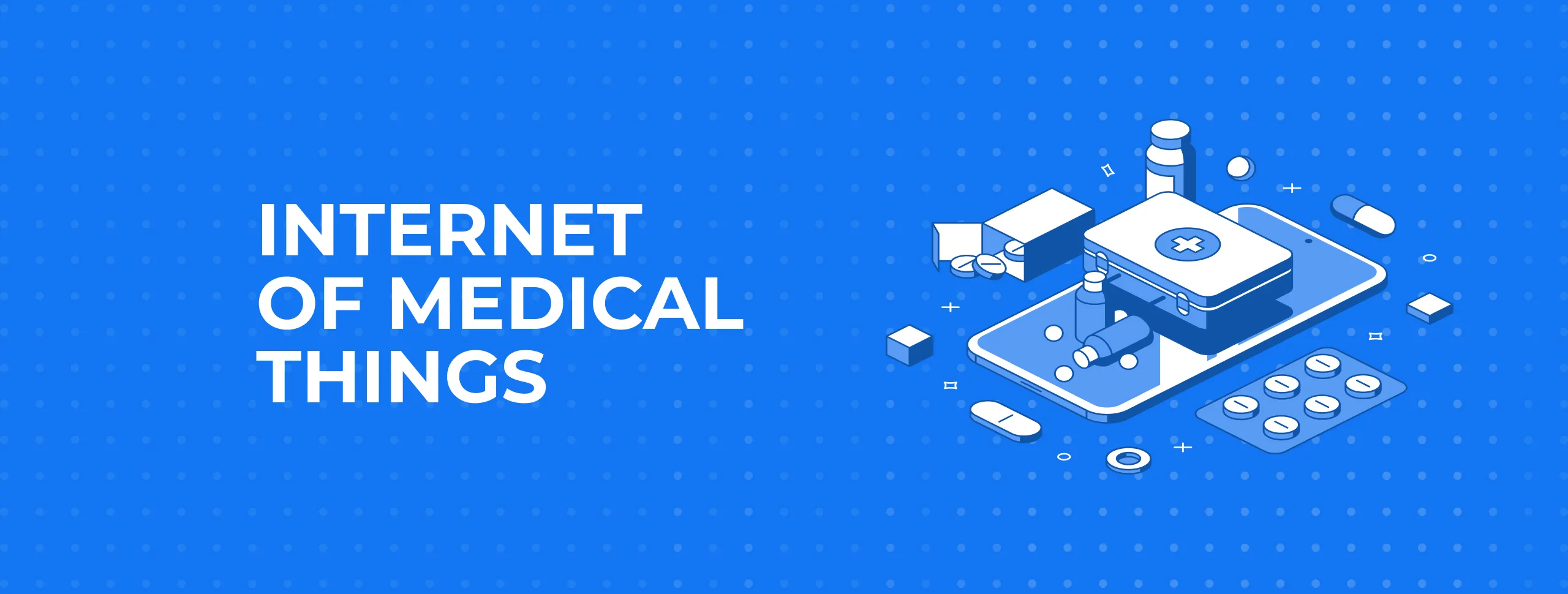
What is IoMT?

Nobody wants to be sick, unless, of course, you are a student with a difficult test coming up. Technological innovation in the sphere of medicine is welcomed with open arms in comparison with other industrial sectors. Thanks to medical progress, we can be cured of many more diseases than ever before and live longer lives. Medtech plays a significant role in medical development and, nowadays, sensors and remote portable devices permeate all areas of the ordinary day in hospitals. It goes without saying, COVID-19 recalibrated the way medicine functions now and added 10–14% of growth to the medtech market. If we narrow down to the Internet of Medical Things market, we will see the potential growth to be $254.2 billion by 2026. 123
What is IoMT?
The Internet of Things technology has a form of a structure that serves for data swapping between sensor-equipped smart devices and cloud services or computer/mobile software. IoMT measures and tracks a person's health indicators and/or environmental conditions. The more accurate and timely information medical staff gets, the more efficient and proper treatment will be. Keeping abreast of IoMT development lets hospitals enhance the quality of patient care, and more life-threatening moments can be avoided. Using IoMT (remote control devices and telemedicine), we make fewer visits to the physician and don’t put ourselves at risk of becoming infected again.
How does it work?
IoT is only a mediator of the full chain. In order to start, it is best to specify the information you need to monitor and install the right sensors to gather data from the human body and environment. Then, through the communication channels, such as Wi-Fi, Bluetooth, or wired, the information is transmitted to the computer or smartphone. The 5G development beneficially affects the speed and stability of the network. It enables the transfer of large-scale, high-quality images faster in order to make critical life-saving decisions. In the next step, the information comes onto the devices with bespoke software implemented into them. It collects, analyzes, and stores data, providing the results to the user. As people of all ages will use this software, it should be very intuitive and user-friendly. Moreover, in the time of regular cyberattacks, it must be highly protected. IoMT generates big data that is useless until it is worked through. For this process, AI and ML are of particular importance. The right algorithms will sort all this information through and conduct analysis for further data-driven insights.
Types of IoMT devices
In terms of the tasks that devices complete, all IoMT devices are divided into four groups:
- preventive;
- diagnostic;
- treatment control;
- phase of recovery.
Let’s have a look at some real-life examples. The most familiar ones are fitness wearables, such as smartwatches, that track your activity data as well as the quality of sleep for further statistics and analysis in the app of your smartphone. They can also gather your body indicators: temperature, blood oxygen level, and an electrocardiogram. It sounds too serious for watches, doesn't it? And this is not the limit of dreams. Another group of IoMT is similar, but used for medical purposes only and after a doctor’s prescription. Moreover, they need to be certified by the authorities. For example, the Tango belt sends a notification in case a man falls and deploys airbags to cushion the impact. This saves doctors’ time and allows them to control the whole situation remotely in real time. Smart pills are connected to the wearable arm patch and transmit information about the reaction to the medicine taken. With special software, data is kept and, if needed, sent to the cloud service to which medical staff have access. loMT self-serving diagnostics kiosks eliminate the number of visits to the hospital and, in conjunction with telemedicine, provide basic help to the remote corners of the planet
IoMT devices are brilliant tools and greatly facilitate our lives, but in order to get the best out, proper, reliable, and protective software must accompany them. Magora is ready to carry out a professional expertise and custom web or mobile app development to improve healthcare.





